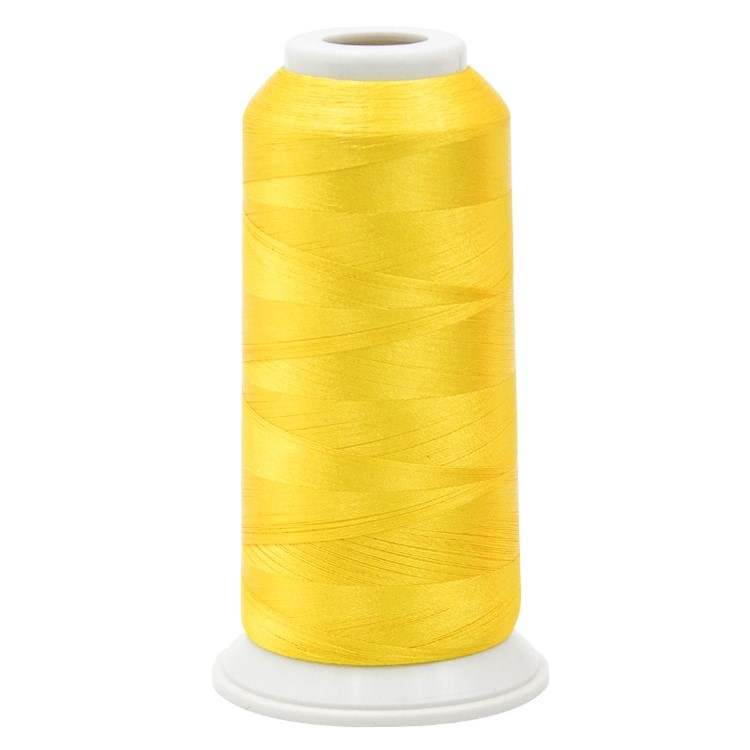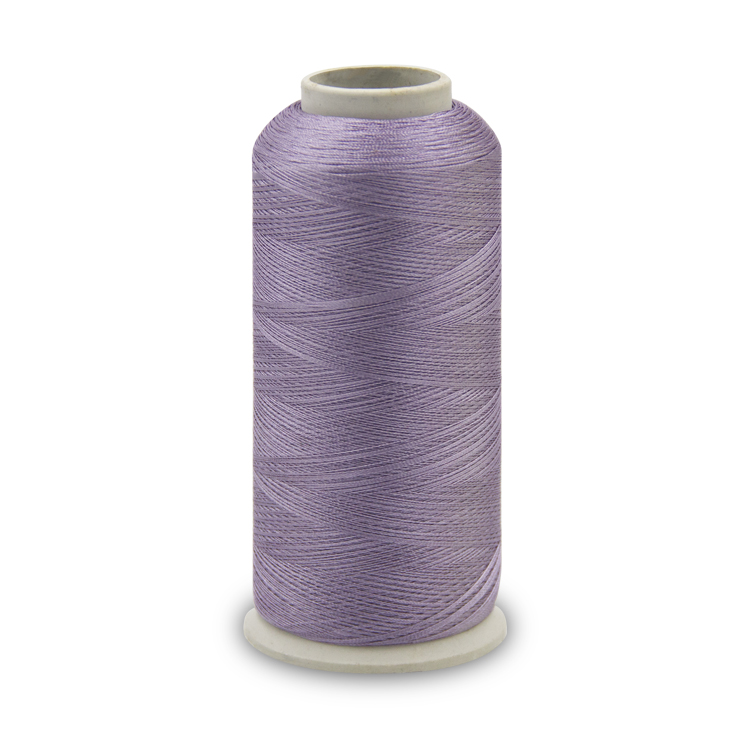
The cause analysis and control of the cross bar of knitted yarn(2/4)
3. The control of the factors that produce the rung in the spinning process
3.1 establish the system of chemical fiber inspection and raw cotton grading
Before using all kinds of chemical fiber materials, the specifications, batch numbers, whiteness, luster and moisture of the materials to be used shall be analyzed and classified. For the fibers to be used, the proportion shall be reasonable according to the requirements of varieties. If necessary, sampling and dyeing shall be carried out. Under the same conditions, dyeing comparison shall be carried out to check whether there is difference in the color, and then normal batching shall be carried out. At present, there are mainly two kinds of cotton fiber varieties used in China, fine wool cotton and long wool cotton, fine wool cotton: the general length is 25-33mm, and the linear density is about 2.12-1.56dtex (4700-6400 public branch). According to the rolling process, fine wool can be divided into sawtooth cotton and roller cotton. There are few impurities in sawtooth cotton, low short fiber rate, good fiber uniformity, but there are many impurities and fewer neps in roller cotton. Long staple cotton is also called island cotton. Generally, the length is more than 33mm, and the linear density is about 1.54-1.18dtex (6500-8500 male), which is mainly used to produce high count superior cotton yarn finer than 10Tex. Imported cotton is mainly American cotton and Australian cotton, and GM grade cotton is equivalent to national cotton grade 1-2. As the imported cotton is picked by machine, the obvious advantage of cotton is that there is no "three silk", but the raw materials are more short fiber and neps than that of national cotton, and the fiber length is slightly shorter than that of national cotton. Therefore, according to the characteristics of cotton raw materials, raw cotton production areas, grades, linear density, maturity, appearance color selection differences should be classified in order to use them together and control color differences.

3.2 factors causing rungs when controlling the use of raw materials
(1) the raw material used for spinning is fiber aggregate, and the length, linear density, strength, color and batch number of fibers will be different. In order to make the final product uniform and consistent in performance, it is required that the technical data indicators of the selected raw materials are close to each other and can achieve full mixing when used. The use of raw material batching should follow the principle of classification and queuing, gradual replacement, multi package mixing and cross compensation.
(2) for cotton blending, the main peak of raw material performance should be highlighted as the main component, accounting for more than 65% (such as raw material grade main body, batch main body, length main body, etc.). To meet the similarity principle, when there is a large difference between the color of a batch of raw cotton and the color of the main body, its physical performance indexes must be similar to the main peak performance, and the raw materials to be batched should not cause significant changes in the main indexes of the original mixed raw materials. The proportion of each batching to be batched is usually controlled within 13%. When the raw materials to be batched decrease by more than 20%, the original components should be replaced The material is re proportioned and spun.
(3) the raw cotton in normal use should also be reasonably blended according to the data such as micronaire value, fiber grade, lint, length and batch number of its fiber. When choosing raw cotton, maturity should be taken as the index to control the dyeing quality of raw cotton. According to expert analysis and practical experience, the percentage of immature fiber between bales in the cotton blending queue shall not be more than 2%, while the percentage of immature fiber between batches shall not be more than 0.5% as far as possible. The degree of color difference changes with the maturity of cotton fiber. The greater the maturity difference, the greater the color difference, and the cotton with similar maturity, the smaller the color difference. The color of cotton fiber with good maturity is deep and bright, and the color of cotton fiber with poor maturity is not only light, but also dark. Therefore, we should not only test and control the average maturity of cotton fiber, but also test and control the content of immature fiber. The content of immature fiber should be controlled within 14% when the fullness of fiber cell wall is less than 0.25 (maturity coefficient 0.5). Because the use of raw materials is easy to cause color difference, especially when the color used for dyeing in the knitting factory is relatively dark, such as blue, dark green and other dark colors, the fabric is easy to appear obvious crosspieces.
(4) the grade difference of raw cotton mixed raw materials should be in the range of 1-2, the length difference should be 2-4mm, and the linear density difference should be 0.07-0.09dtex (500-800 male), which is equivalent to the difference of Makrolon value m of the same batch of ingredients controlled within + / - 0.5, and the use of each trough of flowers should be controlled around 5%. In the production process, raw cotton can be selected according to the needs of the end use of customers' products. Generally, raw cotton with a lower maturity can be used for bleaching blank, while raw cotton with a better maturity can be used for dyeing blank.
(5) in general, enterprises are used to using recycled flowers in the process of cleaning, which should be controlled within 5% according to the theory and practice. However, due to the looseness of recycled flowers and the difference between the tightness of each package of raw materials, it is easy to absorb the recycled flowers first when grasping directly by the cotton grabber, which makes the amount of recycled flowers difficult to be even. Due to the limitation of blending of cotton and cleaning, it has been proved by long-term production practice Ming Dynasty, will be a mark of the special spinning, and will be mixed in the draw more uniform, adaptable, easy to manage production. In this way, it not only ensures that there is no overstocking of the returned flowers, but also ensures that the blending is even and there is no color difference. The disadvantage is that a series of spinning varieties should be added to the drawing process during cotton cleaning. For example, when 8 pieces are combined, one piece of rewinding strip is used, with the proportion of rewinding accounting for 12.5%. This factor only affects 3% of the fiber change in the finished yarn after drafting by the drawing frame,
(6) the chemical fiber shall be batched according to the manufacturer's product, specification, model, batch number, luster (such as light, semi light, no light), whiteness, dyeing difference, moisture regain, residual sulfur and other relevant technical data, according to the new national standard for chemical fiber materials (2008 Version) and the enterprise's practical experience, using the raw material characteristics of each raw material manufacturer, such as the whiteness index of viscose raw material is within + / - 2 It is suitable to use the ingredients. If there is a big difference in the moisture return of some raw materials or there is a difference in the luster of raw materials, they should be used separately. The main ingredients of ingredients should be selected reasonably according to the conditions of raw materials. At the same time, multiple marks and packages should be used to make full use of the production line and batch number of chemical fiber raw material processing enterprises for reasonable batch reception. The proportion of raw materials for each batch shall be controlled within 10%, and frequent batch receiving shall be reduced.
(7) the difference of linear density between cotton fiber and other chemical fiber should be controlled within 0.145 dtex (500 metric branches). For pure chemical fiber, such as viscose, the raw materials with main components accounted for more than 60% according to the blending requirements, and then blended with other raw materials according to the yarn requirements. The linear density difference can be controlled within 0.3dtex.
3.3 strengthen the control and management of carding process
Each batch of raw materials shall be stacked in a reasonable way. Each batch of different raw materials shall be separated and stacked as far as possible, and each package of raw materials shall be unpacked at a designated position to make each package of raw materials loosen naturally, reduce the weight of unit volume of fiber raw materials, create conditions for carding, and facilitate mechanical grasping when using. The cotton grabber shall adopt the method of frequent grabbing and thin feeding, and control the production efficiency of the cotton grabber to be more than 85%, and open the cotton The machine needs thin feeding, fast feeding, light beating to improve the operation rate. The flowers sent from the cleaning machine to the carding machine shall be stable, and shall be transported evenly according to the actual consumption of the carding machine. The air speed of the cotton conveying pipe is usually controlled at 5-7 M / s, which is too high to fall down, resulting in the light of the front and back of the carding machine, and the low flow of cotton at the bottom of the pipe, resulting in the heavy of the front and back of the carding machine, and even increasing the bunch of cotton fibers. The air pressure is generally controlled at 40-60 mm water column, The static pressure difference between the two sets is in the range of 2mm water column, the pressure difference is too large, and the weight difference between the two sets is large. Of course, it is also very important whether the effect of self leveling is stable. The blowing carding unit shall be well opened, the cotton block shall be small and the cotton shall be smooth, so as to make the raw materials mix evenly. At the same time, each process must be spinning first, avoiding long-term accumulation of semi-finished products.




